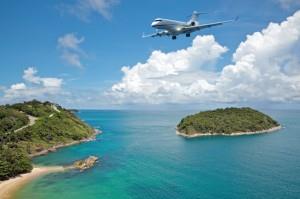
Here’s a first, which after being a certified diver for 19 years, an instructor for 14 years and a dive boat captain for almost 10 years … I didn’t think this would ever happen!
I took out several divers this morning, on the boat was some out of town students and their instructor. We were scheduled to do two dives on a 60 foot wreck so that everyone could complete some training dives.
For the most part everything went well considering the sloppy sea conditions, however after the first dive was completed the out of town instructor informed me that he and 3 of his students were going to sit out the next dive because they were flying back up North at 5pm this afternoon. Oh… and he’s telling me this at 11 a.m. after a 25 minute dive to 60 feet!!
The look on my face and the faces of fellow co-workers must have struck him as odd because his response was, “I know, we don’t follow that PADI bullst. We follow NOAA dive tables that say if you are an A, B or C diver you can fly within 6 hours.”
After a quick Google search on the iPhone I find a NOAA.pdf file that does indeed say that if you are an A, B or C diver you can fly to altitude after an 8 hour surface interval. However after further investigation the NOAA.pdf also states in segment 3, “Note 1: When using table 9-5, use the highest repetitive group designator obtained in previous 24-hours period.”
After examining the NOAA No-Decompression Air Tables the student divers were actually an “E diver” after a 60 foot dive for 24 minutes. This same group of divers had also dove on our boat the previous day when we visited a 110 foot wreck site followed by a 30 foot reef dive on a morning trip.
I contacted the instructors training agency and inquired about their training standards and flying after diving recommendations since I was not familiar with this particular agency. The woman I spoke with stated that they recommend at least 12 hours prior to diving if you do a single dive and 24 hours if you do multiple dives or multiple days of diving. Needless to say I explained what had happened and reported the instructor to his training agency. In return they were going to contact him right away.
Alright divers, regardless of which agency you train under, the one organization I would trust overall for safe diving practices is Divers Alert Network. Most training agencies use their guidelines, if not a more conservative version of them.
Divers Alert Network states:
The following guidelines are the consensus of attendees at the 2002 Flying After Diving Workshop. They apply to air dives followed by flights at cabin altitudes of 2,000 to 8,000 feet (610 to 2,438 meters) for divers who do not have symptoms of decompression sickness (DCS). The recommended preflight surface intervals do not guarantee avoidance of DCS. Longer surface intervals will reduce DCS risk further.
For a single no-decompression dive, a minimum preflight surface interval of 12 hours is suggested.
For multiple dives per day or multiple days of diving, a minimum preflight surface interval of 18 hours is suggested.
For dives requiring decompression stops, there is little evidence on which to base a recommendation and a preflight surface interval substantially longer than 18 hours appears prudent.
See more at:
alertdiver.com/?articleNo=1482#sthash.QiQKm4yU.dpuf